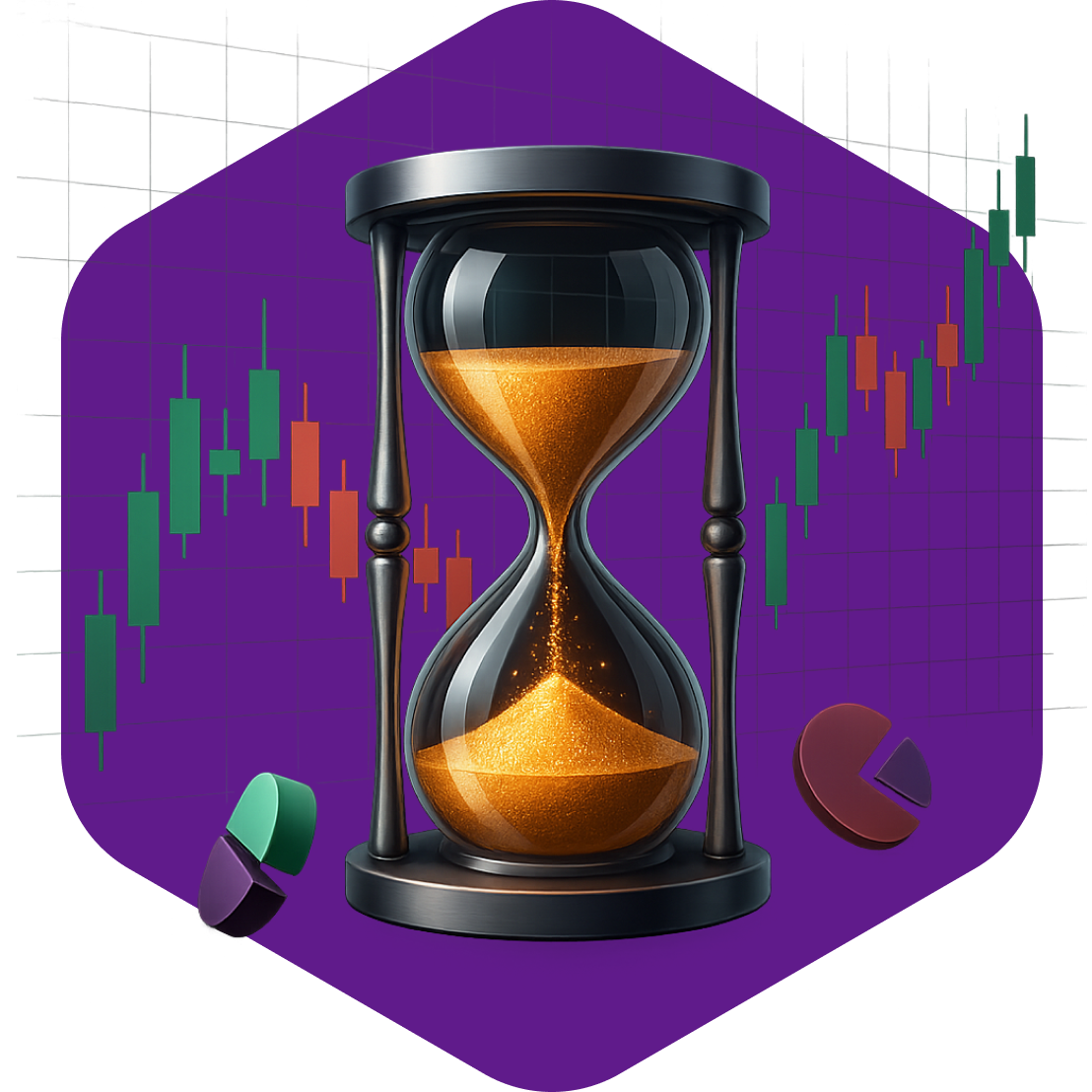Stock markets operate almost 24 hours a day, but activity varies significantly depending on which part of the world is currently trading. Dividing the trading day into main sessions – Asian, European, and American – is therefore key to understanding market dynamics and timing trades correctly. Why is it important to know the opening hours of individual exchanges and when the highest volatility (price fluctuations of assets) can be expected? These and other questions are the focus of this article.
Main Global Trading Sessions
Asian Session
Trading: approx. 00:00–09:00 UTC
The Asian trading day usually starts with the opening of the Tokyo Stock Exchange, around midnight UTC. During this phase, markets in Japan, China, Australia, and Singapore are most active. This session is typically characterized by lower liquidity and lower volatility than other sessions, except during moments when the Bank of Japan or other Asian authorities release important economic data. The most traded instruments here are currency pairs and, for example, Asia-Pacific region stocks.
European Session
Trading: approx. 07:00–16:30 UTC
Often considered the "center" of global trading because it overlaps with the late Asian and early American sessions. Especially around the opening of the London Stock Exchange (approx. 08:00 UTC), there is usually a sharp increase in volume. This session is characterized by increased liquidity and volatility. Most traded here are forex (EUR, GBP, CHF), European indices (DAX, FTSE), with frequent sharp movements during macroeconomic data releases (PMI, inflation, unemployment).
American Session
Trading: approx. 13:30–21:00 UTC, main stock markets from approx. 14:30 UTC
After the opening of the New York Stock Exchange (NYSE, NASDAQ), markets often reach peak activity. Europe is still active, creating high trading activity in the first part of the American session. This session is characterized by high liquidity and often significant price movements during U.S. macro data releases, corporate earnings, or speeches from the Fed. Most traded here are U.S. company stocks, U.S. indices (S&P 500, Dow Jones, NASDAQ), USD pairs, and commodities (e.g. oil, gold).
Why Is Timing of Entries and Exits Important?
Timing trades significantly affects potential profit and risk. High volatility can mean a chance for quick profit, but also sharp losses. Conversely, low volatility during less active times reduces the chance of dramatic price jumps, but may also slow progress toward goals.
It is therefore key to monitor when exchanges open, when important data is released (unemployment, central bank interest rates), and last but not least session overlaps (as during the overlap of the European and American sessions, markets often reach the highest liquidity and trading volume).

How to Align Trading Style with Market Hours?
Every trader has different preferences, goals, and available time. Some focus on fast intraday trades, others prefer calmer swing strategies over several days. So how do these approaches and trading styles differ?
Intraday Traders
- Focus on the most active parts of the day (e.g. session overlaps), when quick movements can be expected
- Short-term strategies, such as scalping or breakout trading, work better with higher volatility
Swing Traders
- Don't need to watch the market constantly, instead look for significant price levels and important events
- Proper timing of entry based on the rhythm of exchanges helps reduce the risk of entering a trade
Long-Term Investors
- Are not as dependent on precise timing during the day, because their positions last months to years
- Even so, they can use rhythm knowledge for better entry or exit timing (for example, before earnings reports)
Summary of Sessions and Timing
Understanding the main global trading sessions and their significance is an invaluable tool for more effective trading. With the knowledge of when most opportunities appear on the market and when activity drops, you can better plan your trades, adapt to current liquidity and volatility, and ultimately improve your results.
In Part 3 of our Beginner's Guide to the Stock Market, you can look forward to the topic of The Basics of Perfect Market Analysis. If you don’t want to wait or learn anything more, our platform is here, where you simply choose a slot (a fully prepared market trade) and send in your deposit. Everything else will, as always, be taken care of by our traders.

